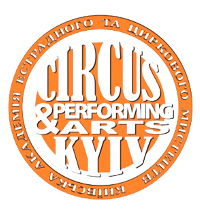Sound directing in circus art: specific features
Abstract
The purpose of the article is to highlight the specific features of the work of a sound director of the circus art, characterization of the sound direction practices in circus work, analysis of the acoustic properties of the circus room, study and identification of the existing problems, so as the methods for their solving, based on modern sound engineering innovations and own experience in sound direction and pedagogy. The research methodology is based on the philosophical and aesthetic principles of musical and sound concepts of circus performance and comprehension of the musical and communicative process, that allows to summarize and substantiate the conclusions of the outlined problematics. Highlighting sound directing in circus art as one of the most specific and latest direction in the general sound direction, we can outline the following requirements for people who are engaged in this profession, they must: professionally operate the available sound equipment; it is advisable to have all the technical means of artistic expression that are used for the sound design of circus numbers; know well the acoustic properties of auditorium of circus; be able to prevent and, if necessary, eliminate the resulting noise and distortion in the form of various degrees of echo, early reusable reflections, etc, on time.
The work of a circus sound director requires a proper, meticulous and critical attitude towards it at all stages of the preparation of a new act of the performance. It needs to rely on modern digital technologies and innovative sound engineering tools, and they, in turn, demand a basis for practical work and technical knowledge. A sound director who works for the arena cannot be just a technical worker, he must have musical and aesthetic taste, understand the psychology of the behavior of animals and birds in the arena, be able to find a common language with artists and respect their work.
References
Власов Є. Музика у виставі: теорія і практика музично-шумового оформлення вистави: навч. посіб. Луцьк: Волинська обласна друкарня, 2001. 100 с.
Кравченко О. Планування студійних приміщень і звукоізоляція. ПРО: звук, світло, музичні інструменти: зб. ст. Київ: Всеукраїнська Асоціація дистриб’юторів і продавців професійного звукового та світлового обладнання, музичних інструментів. 2008. № 1. Сс. 64-71.
Мащенко І. Термінологічний словник основних понять і виразів: телебачення, радіомовлення, кіно, відео, аудіо: енциклопедія електронних мас-медіа: у 2 т. Т. 2. Запоріжжя: Дике поле, 2006. 511 с.
Рязанцев Л. Звукорежисура: навч. посіб. Київ: ДАКККіМ, 2009. 144 с.
Ужинський М. До визначення професії звукорежисер в сучасному мистецтві. Українська культура: минуле, сучасне шляхи розвитку. 2013. Вип. 19. Т. 2. Сс. 283-287.
Черненко І. Мистецтво цирку. Київ: Державне видавництво образотворчої літератури і музичного мистецтва УРСР, 1962. 46 с.
Borwick J. Loudspeaker and Headphone Handbook. Third Edition. Oxford: Focal Press, 2001. 585 p.
Gerzon M. A Question of Balance. Records Quarterly magazine. 1987. Vol 2. Pp. 48-53.
Russel J. The Sound. London: Bookvica Publishing, 2012. 106 p.

 ISSN
ISSN  ISSN
ISSN 



